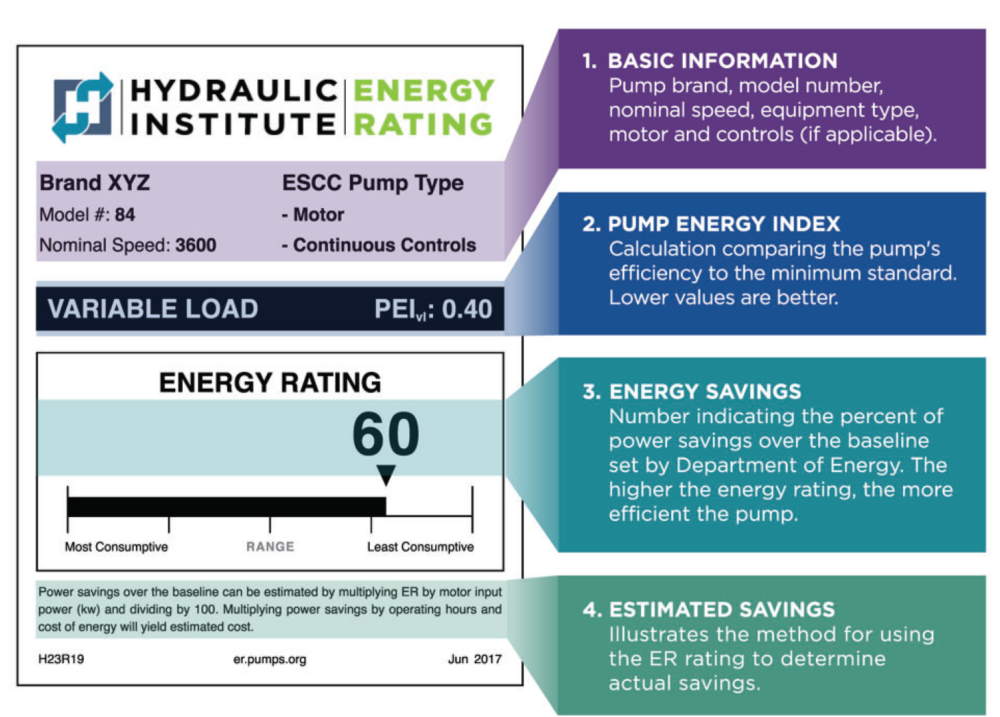Energy Rating labels for commercial and industrial pump systems were created by the Hydraulic Institute in 2020 to foster an easier, streamlined way to determine the efficiency of a pump. Prior to the creation of the label, purchasers had to manually calculate efficiency based on multiple factors, which could lead to missed opportunities for improved energy performance and savings.
The label, also known as the Commercial & Industrial or C&I Pump Label, features numbers and measurements that indicate how much more efficient a specific pump is, compared to the federal baseline for pumps allowed to be sold in the United States. The primary feature of the label is the Energy Rating (ER) number. This number is derived from the Pump Energy Index—written as PEI on the label—a metric from the U.S. Department of Energy that is based on a uniform performance procedure all pump models are tested against.
This information is reflected in a numerical range from Most Consumptive to Least Consumptive. The higher the number, the less consumptive—or the more efficient—the pump. For example, a pump with an ER60 is 60% more efficient than the minimum required by law, or ER0. This number not only represents the lab-tested performance, but also allows you to calculate exact performance for your specific situation, based on pressure, flow, and run hours.
Even though the pump’s estimated annual savings is not provided, it can be calculated by using the information provided on the label, the net positive suction head required, run hours, and other features. Each of these elements are crucial to determine the pump’s function, operation, and savings.

